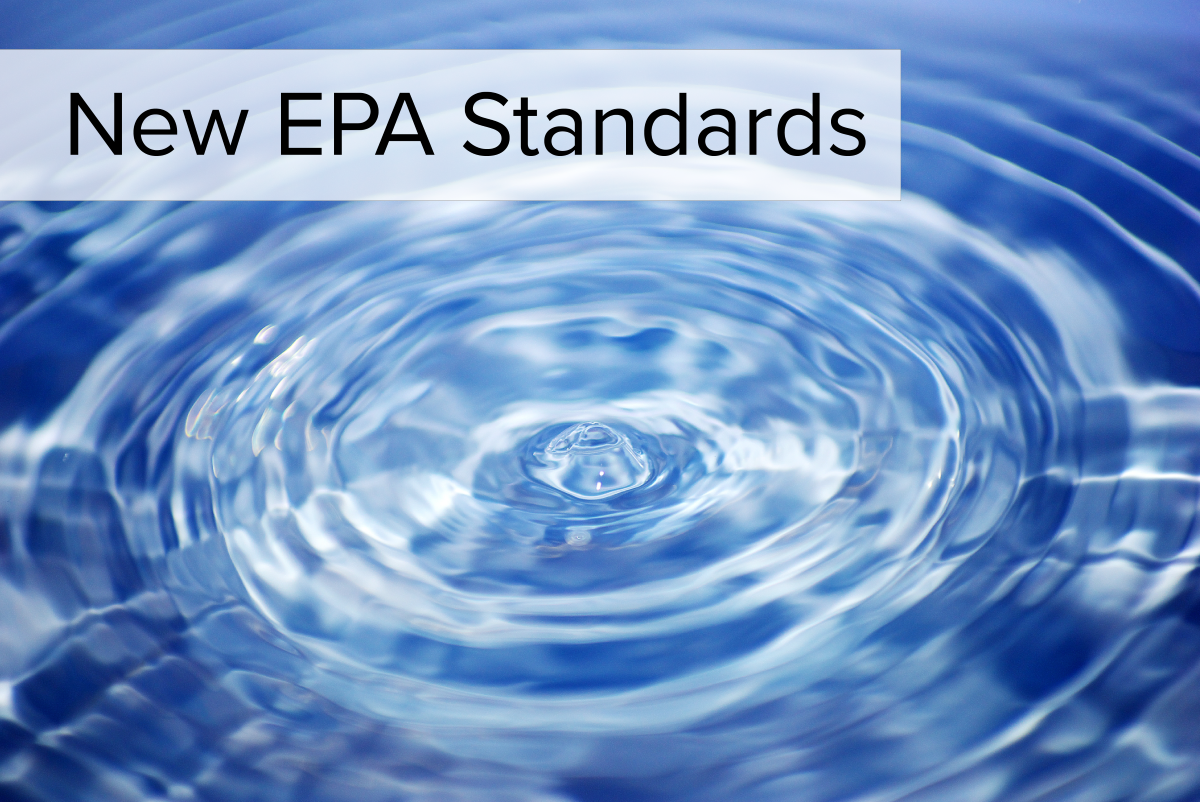On April 10th, following the consideration of comments received on the proposed rule, the U.S. Environmental Protection Agency announced the first-ever national, legally enforceable drinking water standard to protect communities from exposure to harmful per-and polyfluoroalkyl substances (PFAS). The final rule represents the most significant step to protect public health under the USEPA PFAS Strategic Roadmap. The final rule is projected to reduce PFAS exposure for approximately 100 million people, prevent thousands of deaths, and reduce tens of thousands of serious illnesses.
USEPA has established legally enforceable levels for several PFAS known to occur individually and as mixtures in drinking water. This rule sets limits for five individual PFAS: PFOA, PFOS, PFNA, PFHxS, and HFPO-DA (also known as “GenX Chemicals”). The rule also sets a limit for mixtures of any two or more of four PFAS: PFNA, PFHxS, PFBS, and “GenX” chemicals.
- Enforceable Maximum Contaminant Levels (MCL) are set at 4.0 parts per trillion (ppt) for PFOA and PFOS, individually. The standard will reduce exposure in drinking water to the lowest levels that are feasible based on the current analytical methods.
- The Maximum Contaminant Level Goal (MCLG) and MCL are set at 10 ppt for PFNA, PFHxS, and GenX Chemicals. (An MCLG is a non-enforceable health-based goal). USEPA has deferred the final regulatory determination and standard setting for PFBS to allow for further evaluation.
- The MCLG for PFOA and PFOS is zero. USEPA says this reflects the latest science showing that there is no level of exposure to these contaminants without risk of health impacts, including certain cancers.
- Health Based Water Concentrations (HBWC) have been set at 10 ppt for PFNA, PFHxS, and GenX and 2,000 ppt for PFBS.
- As a novel concept, USEPA is setting a Hazard Index (HI) of 1 for any mixture of two or more of the following: PFNA, PFHxS, PFBS, and GenX Chemicals. The Hazard Index represents the sum of quotients calculated by dividing the analytical result for PFNA, PFHxS, PFBS, and GenX by the respective HBWC.
- Samples are collected from each entry point while compliance is determined based on a running annual average of samples.
Affected water systems including community water systems and non-transient non-community water systems have three years to complete the initial monitoring for the PFAS chemicals listed above. Initial monitoring is based on system size and source water type. USEPA has extended the compliance deadline for those systems which will require treatment by two years, thus allowing water systems up to five years to come into compliance.
The rule requires public water systems to inform the public of the level of PFAS measured in their drinking water. If PFAS is found at levels that exceed the standards, systems must implement solutions to reduce PFAS in their drinking water within five years, in 2029.
USEPA will be working closely with State coregulators in supporting water systems and local officials to implement this rule. In the coming weeks, USEPA will host a series of webinars to provide information to the public, communities, and water utilities about the final PFAS drinking water regulation. To learn more about the webinars, please visit USEPA’s PFAS drinking water regulation webpage. USEPA also has a nationwide Water Technical Assistance program to help small, rural, and disadvantaged communities access Federal resources by working directly with water systems to identify challenges like PFAS, as well as develop plans; build technical, managerial, and financial capacity; and apply for water infrastructure funding. Learn more by visiting the USEPA Water Technical Assistance programs.
If you have questions about how the new PFAS rule affects your public water system, reach out to Nate Weisenburger, AE2S Drinking Water Practice Leader.

